Solving an easy puzzle - Scanning
This tutorial will guide you through the steps required to find a solution to a sudoku puzzle using the player available on this website. Throughout the tutorial we will move around the grid using the mouse and use the keyboard to enter numbers and pencil marks.
If you are new to sudoku please familiarize yourself with its terminology and rules before continuing this tutorial.
The puzzle to solve
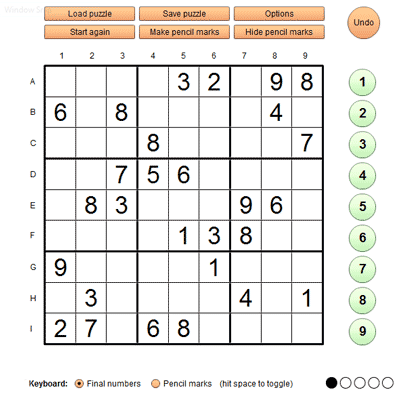
The puzzle we will solve in this tutorial is rated 'very easy' (it was published on the 7th of April,2012). You may follow along solving the same puzzle by clicking on this link that will open the same puzzle in a new window (or tab) of your browser. At the beginning we are presented with the grid containing only the givens.
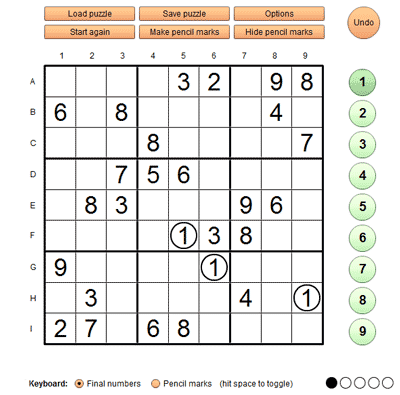
We will start using a simple solving technique known as "Scanning".
Start looking for the 1's by clicking on the highlighter button '1'. This will highlight with a black circle all instances of 1 on the grid (givens and any 1's that you previously entered).
Clicking on the highlighter button rather than simply hovering over it allows us to keep the numbers highlighted until we click the button a second time or click on another button. This way we can move the cursor around the grid concentrating on 1's.
Examining box 7 in conjunction with rows G, H and I we notice that 1's appear in row G and in row H but not in row I. Therefore the only row where we can add a 1 is row I. Because box 8 and box 9 already have their 1s (respectively on G6 and H9) the 1 must be in box 7 row I.
The only empty cell in box 7 row I is I3, therefore we move the cursor over that cell and type '1' on the keyboard.
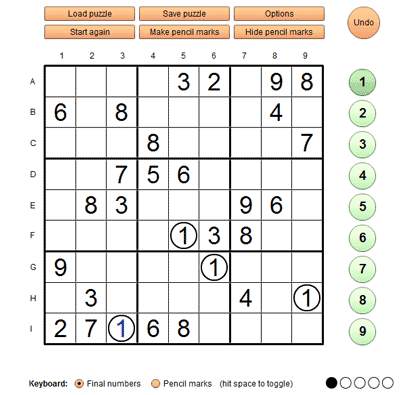
There is nothing else we can do for now to find more 1's. Now, hovering over the highlighter button 2 we also see that there isn't enough 2's on the grid to use this technique. Hovering over the 3's, however we some opportunities, so we click on 3 to keep the highlighting.
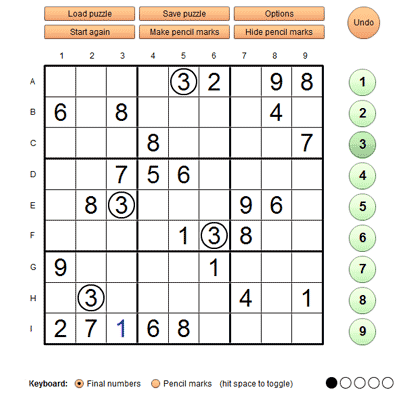
Here we examine the grid vertically searching for single locations in the boxes where we can put the 3's...
Box 1 has no 3's but there are 3's in boxes 4 and 7 in columns 3 and 2. Therefore value 3 in box 1 cannot be in columns 3 or 2 but must be in column 1, in A1 or C1.
However row A already contains a 3 (in A5), therefore C1 is the only cell in box 1 where we can put a 3.
We type '3' on C1.
The same situation we find in box 8, where columns 5 and 6 and row H intersect to leave only cell G4 available for a '3'.
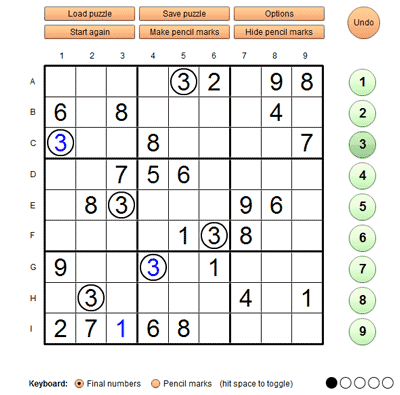
Hovering the cursor over the highlighter buttons 4 and 5 we see that there is nothing we can do for now. We can however place some 6s.
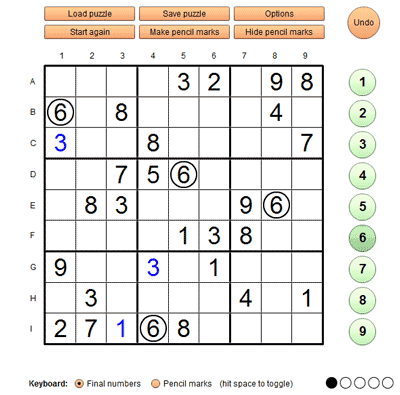
Using the same technique used in the previous step, we can place a '6' in C6.
Looking at the 6's in rows B and C and in column 8, we see that we can safely put a 6 in box 3 in cell A7.
We follow the same process to place another '6' in G9, another in H3 and lastly in F2.
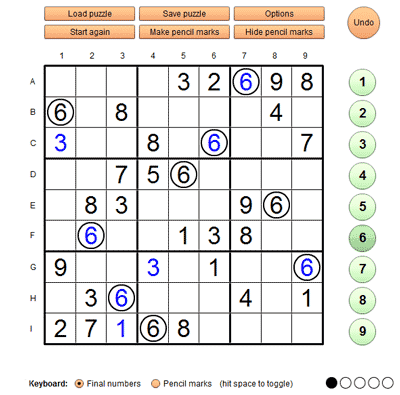
We now have all 6's in place.
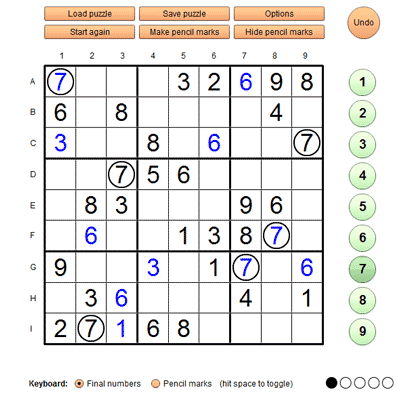
We can also use scanning to find a few 7's:
Columns 2 and 3 and row C all contain a 7, and they intersect in such a way that the only cell available toplace a 7 in box 1 is A1.
Row D and column 9 intersect in box 6, indicating that a 7 goes into F8.
This leads us to place another 7 in G7.
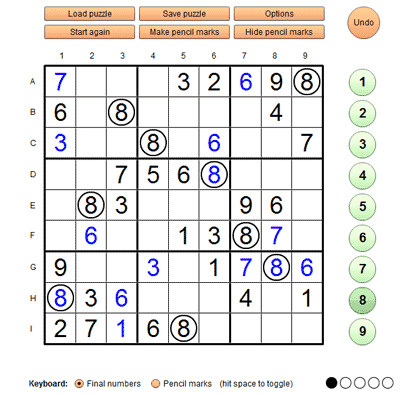
Using scanning we can place all the 8's...
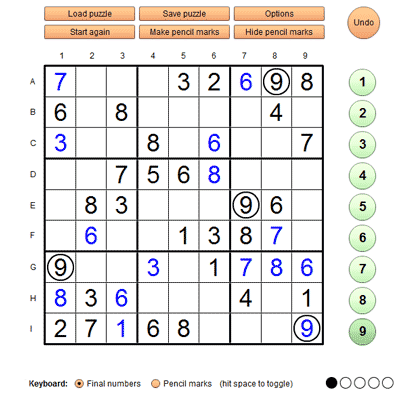
... and one 9 in I9.
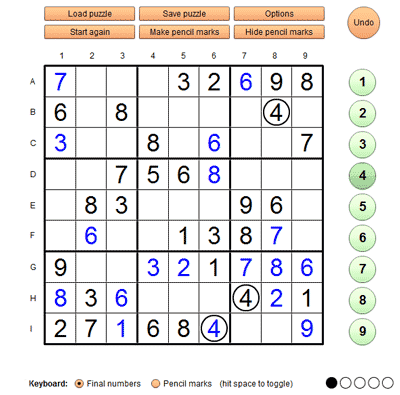
We can now reiterate the process starting from 1...
We can put a 2 in H8, a 2 in G5 and a 4 in I6
The next step will be to use a different technique to find the numbers for the remaining empty cells.
Click here for the next page.